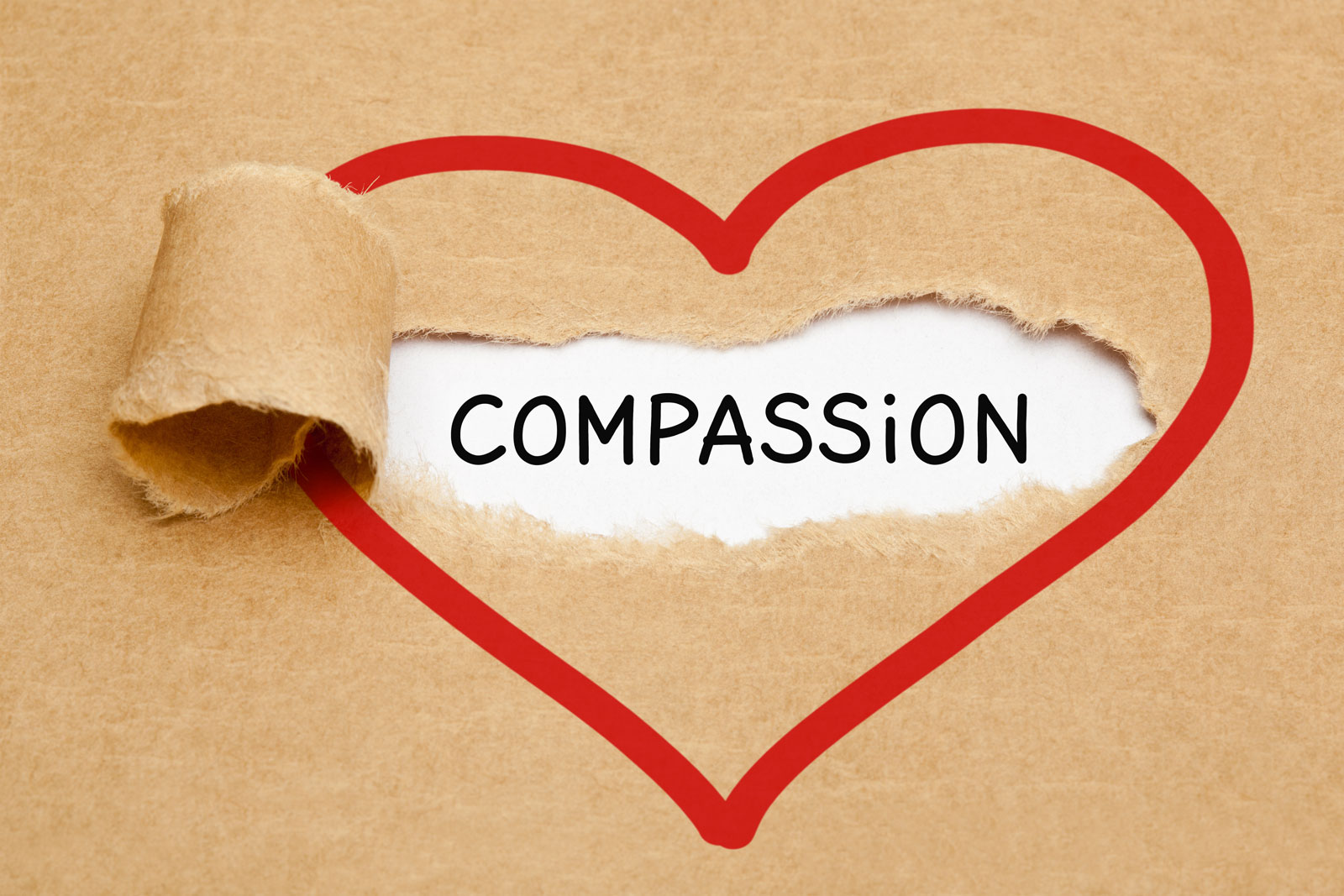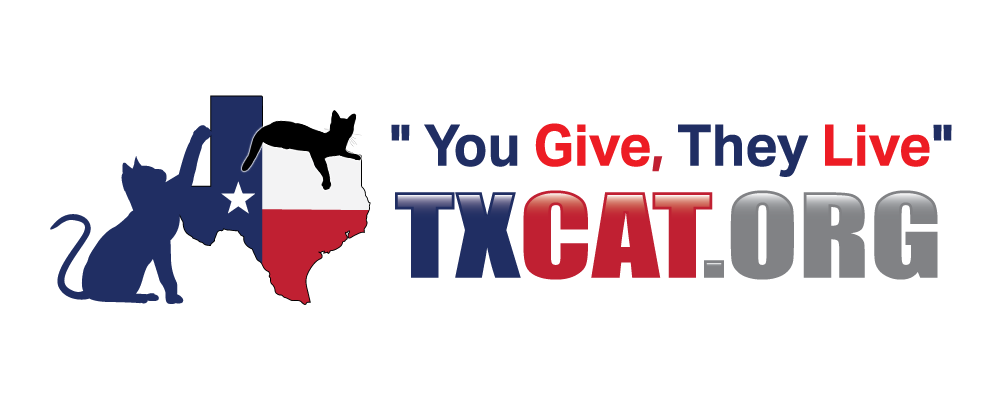How Much Do You Care?
TXCAT ORG | Posted on |

Do you care a little or do you care a lot?
Do you care enough to take action when you observe circumstances that evoke strong emotions even if taking action is inconvenient, costly or emotionally challenging for you? (Good samaritans, animal lovers and animal rescuers do this every day.)
Do you care enough to kill?
Let's talk about this one a bit more.
Animals have no voice about their treatment except the voice that humans give them. Tens of thousands of animals die every year without being able to tell their story about the events in their life that led to their demise, including many young and healthy ones that are euthanized in shelters nationwide.
Aged, ill, and injured pets cannot tell their owners if they prefer to continue to endure or if they prefer to pass, so pet owners can be faced with making decisions about what measures to take for extending the life of a beloved pet or to euthanize them instead.
The “compassion paradox” can cause significant anxiety for a pet owner faced with deciding if euthanasia is a compassionate act for an aged, sick, or injured pet or if it is an unacceptable animal killing. It can be emotionally difficult to watch a beloved pet struggling and an underlying question that further complicates the paradox is, “Are we euthanizing a pet to end how it feels or to end how we feel?”
Rationalizations and justifications proffered about animal euthanasia (mainly to make humans feel better about it) could easily be used to justify euthanasia for humans in similar health circumstances, but that is morally unacceptable.
Euthanize a pet, it's deemed a compassionate act.
Euthanize a human, it's considered murder.
Do these contradictory judgments about euthanization suggest that all the rationalizations and justifications about animal euthanization are really just feel-good words for murder?
Or does it suggest that humans do not deserve the same compassion routinely extended to aged, ill or injured animals?
The “compassion paradox” can be further exacerbated for pet owners due to their beliefs about the value of animal lives and the emotions they ascribe to pets.
When one feels “it's just an animal,” then employing euthanasia is a less emotional decision; however, when one considers an animal “family,” then emotions can run high and euthanasia may conflict with deeply held beliefs and perspectives.
Interestingly, people's attitudes toward animals and their treatment of pets, homeless animals, and wildlife provide direct insight into how people are likely to treat other people. (FBI)
“If you have men who will exclude any of God's creatures from the shelter of compassion and pity, you will have men who will deal likewise with their fellow men.”
—Saint Francis of Assisi

People who engage in inappropriate treatment of, neglect of, or abuse of domestic pets or wild animals will very often engage in similar behavior toward people. (DOJ)

Conversely, people who treat animals with respect and kindness tend to treat people similarly. Parents play an important role in shaping their children's attitudes toward animals and in being responsible caretakers for them.
How does a person who respects and values animal lives come to the decision to euthanize a beloved pet?
- How do we distinguish our subjective perceptions from the reality of the circumstances we are observing?
- Is an animal actually in distress or are we presuming it to be?
- How do we know if our emotions are a response to reality or a response to our subjective imagination?
- Are an animal's circumstances as dire as we imagine them to be?
- Can our emotions cause us to confuse what “is” with what “we think is”?
- How do we know if we may be overreacting to the animal's state?
- Which emotions are most likely to compel us into action?
- What must we feel before we are motivated to take action?
- How can we be sure we are taking action due to what “is” rather than our imaginative projection of what “we think is”?
- Is a pet being starved by its owner because it is skinny?
- Is an animal being neglected just because it is outside?
- Is the animal really as sick as we think it is?
- Are we euthanizing a pet to end how it feels or to end how we feel?
Let's also consider some words that are used to describe a few emotions that may be evoked when we observe animals in dire circumstances.
Let us further consider which emotions only make us feel bad for them and which compel us to take action for them.
Empathy is a relatively new word (coined in the early 20th century) compared to sympathy which has been in use since the 16th century. Compassion and pity have been in use since the 14th century.
SYMPATHY sympathy is a feeling of sincere concern for a being who is experiencing something difficult or painful.
Sympathy may result in an expression of understanding about the other's emotional state and is often the only action response to sympathy.
- “I've been thinking about you often.” …
- “I'm so sorry you're going through this.” …
- “How can I help you?” …
- “I'm here whenever you need me.” …
- “I'm sorry.”
Speaking or writing these expressive statements to other humans may be meaningful to them, but not so much to animals.
We may feel better when saying them to an animal, but the animal may not receive them the same as another human does.
Animal situations that evoke sympathy beg a more meaningful response than us mirroring their perceived emotional state internally. Sympathy alone may not compel such action.
EMPATHY empathy involves actively sharing the emotional experience of another being without their feelings being explicitly communicated.
empathy may also be the imaginative projection of a subjective state into a being creating a perception that the being is infused with that state.
Empathy evokes a different internal response than sympathy.
Empathy understands another's feelings and is accompanied by us actually experiencing the feelings that we perceive the other is having.
We may feel happy or sad or lonely, etc. when observing animals in certain circumstances; however, empathy alone may not compel us to initiate any action beyond experiencing the feelings we imagine being present in the animal.
- It sounds like you did everything you could.
- I can see how difficult this has been.
- The whole thing sounds so discouraging.
- I can totally see why you would be upset.
- This is so hard.
- I can't believe how well you're holding up, considering how much stress you're under.
- If that happened to me, I would be so mad too.
- What a day you've had.
- I hear what you're saying.
- It's totally natural that you would feel this way.
Speaking or writing these expressive statements to other humans may be meaningful to them, but not so much to animals.
We may feel better saying them to an animal, but the animal may receive them the same as another human does.
Animal situations perceived with empathy may beg a more meaningful response but empathy alone may not compel such action.
PITY is the feeling of sorrow caused by observing the suffering and misfortunes of other beings and can be benevolent or contemptuous.
Benevolent pity evokes a sympathetic, tender sorrow for one suffering, distressed, or unhappy.
Contemptuous pity implies sorrow for one in misery or distress but from a position of superiority, condescension, or contempt.
Pitiers seldom take action to alleviate the suffering of those they pity.
Animals in pitiful situations could benefit from meaningful action, but pity alone seldom compels action.
COMPASSION is a sympathetic consciousness and understanding of others' distress together with a desire to alleviate it
Compassion and empathy both refer to a caring response to another being's distress.
While empathy refers to an active sharing in the emotional experience of the other being, compassion adds to that emotional experience a desire to alleviate the being's distress.
- Take in a stray animal
- Become a veterinarian
- Open a door for someone
- Speak and respond with kindness
- Apologize for a mistake
- Encourage others
- Offer to help someone with a task
- Forgive others mistakes
- Show respect
- Express gratitude and appreciation
- Euthanize a pet (Doesn't this seem odd in this list of compassionate actions?)
As an ethical behavior, compassion is similar to sympathy, but adds a “take action” component. Whereas feeling sympathy for another person’s predicament involves a genuine emotional response, compassion also includes the motivation to do something to help.
One potential pitfall of expressing compassion (taking actions) is that constant exposure to the distress of others may contribute to compassion fatigue.
What Is Compassion Fatigue?
Compassion fatigue involves feelings of physical and emotional exhaustion as well as withdrawal from those in dire circumstances.
It can reduce feelings of empathy and sympathy for those in need of help.
People who work in helping or caregiving roles (such as animal rescuers, nurses, doctors, or emergency care workers) often experience an extreme state of tension and preoccupation with those they are helping.
Because of this, helpers can experience symptoms of trauma themselves which can dampen their feelings of compassion.
Of these emotions, only COMPASSION urges us to take action.
It compels us to seek to alleviate suffering or distress.
Paradoxically, compassion may compel us to kill a beloved pet.
Is there any doubt why we need rationalizations, justifications, and platitudes about euthanization to console us about the decision we have made?

Leave a Reply